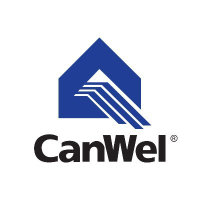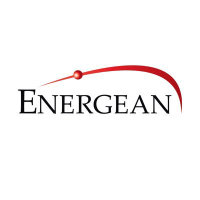
Doman Building Materials Group Ltd
TSX:DBM


| US |

|
Johnson & Johnson
NYSE:JNJ
|
Pharmaceuticals
|
| US |

|
Berkshire Hathaway Inc
NYSE:BRK.A
|
Financial Services
|
| US |

|
Bank of America Corp
NYSE:BAC
|
Banking
|
| US |

|
Mastercard Inc
NYSE:MA
|
Technology
|
| US |

|
UnitedHealth Group Inc
NYSE:UNH
|
Health Care
|
| US |

|
Exxon Mobil Corp
NYSE:XOM
|
Energy
|
| US |

|
Pfizer Inc
NYSE:PFE
|
Pharmaceuticals
|
| US |

|
Palantir Technologies Inc
NYSE:PLTR
|
Technology
|
| US |

|
Nike Inc
NYSE:NKE
|
Textiles, Apparel & Luxury Goods
|
| US |

|
Visa Inc
NYSE:V
|
Technology
|
| CN |

|
Alibaba Group Holding Ltd
NYSE:BABA
|
Retail
|
| US |

|
JPMorgan Chase & Co
NYSE:JPM
|
Banking
|
| US |

|
Coca-Cola Co
NYSE:KO
|
Beverages
|
| US |

|
Walmart Inc
NYSE:WMT
|
Retail
|
| US |

|
Verizon Communications Inc
NYSE:VZ
|
Telecommunication
|
| US |

|
Chevron Corp
NYSE:CVX
|
Energy
|
Utilize notes to systematically review your investment decisions. By reflecting on past outcomes, you can discern effective strategies and identify those that underperformed. This continuous feedback loop enables you to adapt and refine your approach, optimizing for future success.
Each note serves as a learning point, offering insights into your decision-making processes. Over time, you'll accumulate a personalized database of knowledge, enhancing your ability to make informed decisions quickly and effectively.
With a comprehensive record of your investment history at your fingertips, you can compare current opportunities against past experiences. This not only bolsters your confidence but also ensures that each decision is grounded in a well-documented rationale.
Do you really want to delete this note?
This action cannot be undone.

| 52 Week Range |
6.48
9.99
|
| Price Target |
|
We'll email you a reminder when the closing price reaches CAD.
Choose the stock you wish to monitor with a price alert.

|
Johnson & Johnson
NYSE:JNJ
|
US |

|
Berkshire Hathaway Inc
NYSE:BRK.A
|
US |

|
Bank of America Corp
NYSE:BAC
|
US |

|
Mastercard Inc
NYSE:MA
|
US |

|
UnitedHealth Group Inc
NYSE:UNH
|
US |

|
Exxon Mobil Corp
NYSE:XOM
|
US |

|
Pfizer Inc
NYSE:PFE
|
US |

|
Palantir Technologies Inc
NYSE:PLTR
|
US |

|
Nike Inc
NYSE:NKE
|
US |

|
Visa Inc
NYSE:V
|
US |

|
Alibaba Group Holding Ltd
NYSE:BABA
|
CN |

|
JPMorgan Chase & Co
NYSE:JPM
|
US |

|
Coca-Cola Co
NYSE:KO
|
US |

|
Walmart Inc
NYSE:WMT
|
US |

|
Verizon Communications Inc
NYSE:VZ
|
US |

|
Chevron Corp
NYSE:CVX
|
US |
This alert will be permanently deleted.
Doman Building Materials Group Ltd
Doman Building Materials Group Ltd. engages in the distribution and trade of construction materials. The company is headquartered in Vancouver, British Columbia. The company went IPO on 2005-05-18. The company also operates approximately seven wood preservation plants that produce wood products. The firm provides a range of building products to dealer/lumberyard and home improvement centers. The firm operates Vancouver-based Lignum Forest Products LLP, which is a specialty wholesaler and distributor of premium lumber products. Doman operates treating plants and lumber remanufacturing facilities in Canada and the United States, with distribution centers in all major cities and strategic locations across Canada, Central United States and the west coast of the United States. The firm offers a line of structural, exterior, interior and specialty products.

Doman Building Materials Group Ltd. engages in the distribution and trade of construction materials. The company is headquartered in Vancouver, British Columbia. The company went IPO on 2005-05-18. The company also operates approximately seven wood preservation plants that produce wood products. The firm provides a range of building products to dealer/lumberyard and home improvement centers. The firm operates Vancouver-based Lignum Forest Products LLP, which is a specialty wholesaler and distributor of premium lumber products. Doman operates treating plants and lumber remanufacturing facilities in Canada and the United States, with distribution centers in all major cities and strategic locations across Canada, Central United States and the west coast of the United States. The firm offers a line of structural, exterior, interior and specialty products.
Revenue Growth: Doman reported Q3 revenue of $795 million, up 19.9% year-over-year, driven largely by the Doman Tucker Lumber acquisition.
Profitability: EBITDA increased 34% to $62 million, with net earnings rising to $18.1 million from $14.6 million last year.
Margin Stability: Gross margin held steady at 15.5% despite lower prices for construction materials.
Debt Reduction: The company reduced its revolving loan facility by $150 million year-to-date, boosting liquidity to $397 million at quarter-end.
Dividend Commitment: Doman paid its 62nd consecutive quarterly dividend of $0.14 per share.
Market Conditions: Management described the pricing environment as challenging, with soft demand and pricing pressures, though R&R (repair and remodel) demand remained strong.
Acquisitions & Strategy: Liquidity and leverage improvements position the company for future M&A, with management actively looking for strategic opportunities.






































